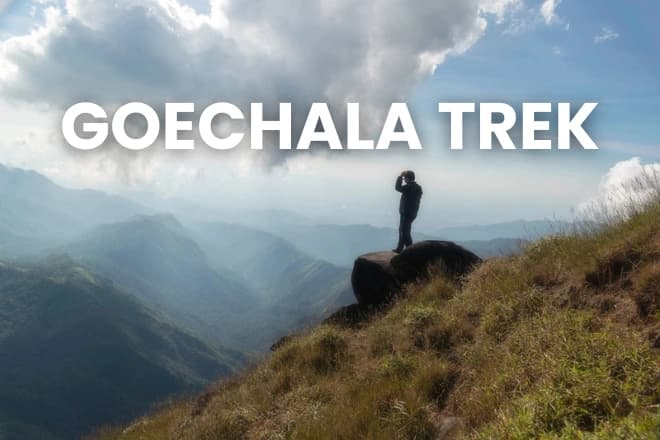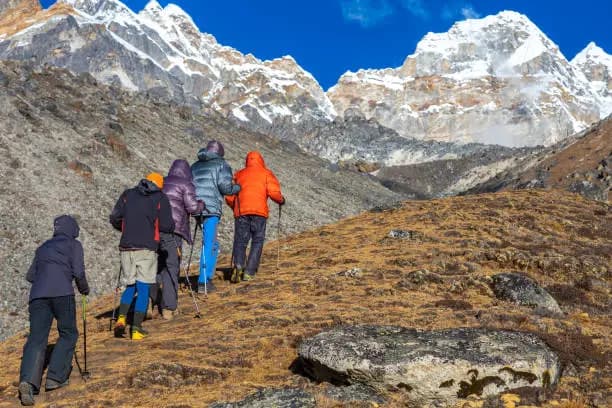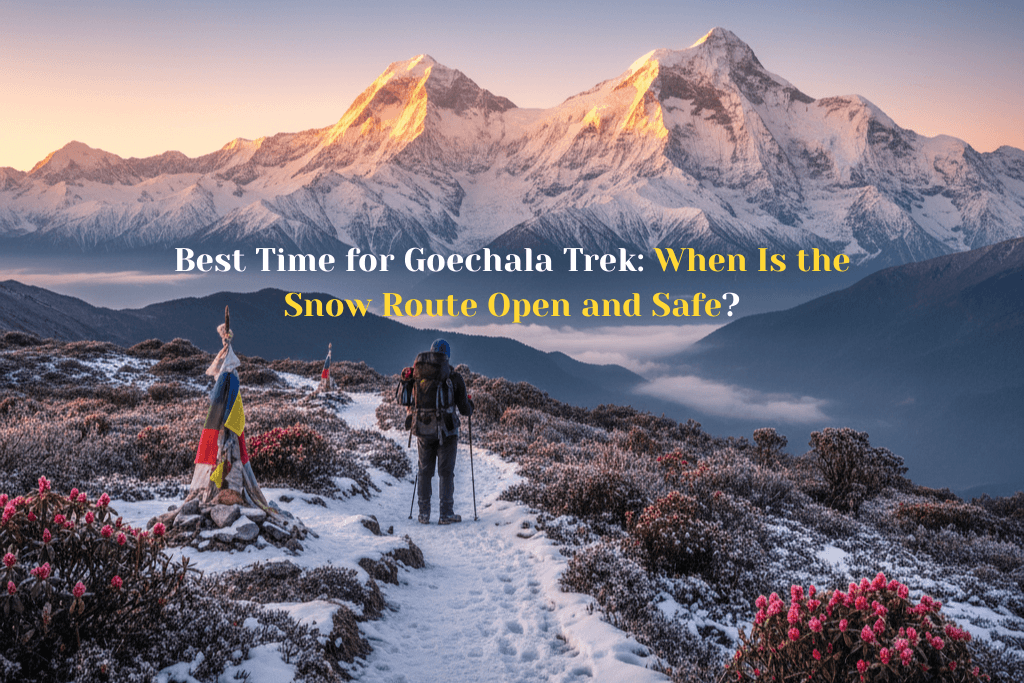The Goechala Trek is one of the most beautiful and difficult treks in India. People from all over the world come to do it. This hike is in the Sikkim area and gives you a clear perspective of the Himalayas, including the beautiful Kanchenjunga, which is the third-highest mountain in the world. We will talk about the best way to plan the Goechala Trek, discuss tips from other travelers, and give survival tips for anyone who wants to take on this amazing journey.
What is the Goechala Trek?
The Goechala hike is a hike in the Sikkim area of India that takes place at a high altitude. It takes you through thick forests, meadows at great altitudes, and rocky areas. In the end, you reach Goechala Pass, where you can see the Himalayas from all sides. Trekkers may see Kanchenjunga, the third-highest mountain in the world, from heights of 6,000 to 16,000 feet. You may also see Mt. Pandim, Mt. Jopuno, and Mt. Simvo from this hike.
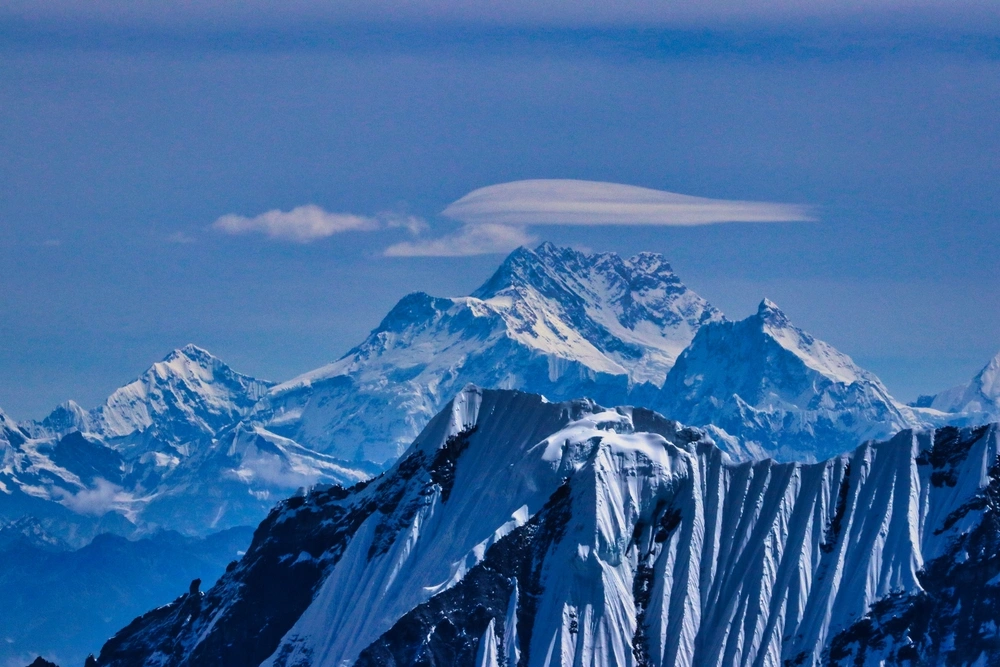
The walk normally lasts 8 to 10 days and goes roughly 90 kilometers. Because of its varied scenery and difficult trails, it is popular with experienced trekkers and nature lovers. Also, hikers can learn about the rich culture of the Sikkimese people and see the area’s beautiful, unspoiled nature.
Best Time to Do the Goechala Trek
The Goechala Trek is best undertaken during two specific seasons:
Pre-Monsoon (March to May)
The weather is nice and clear throughout this time, with daily highs between 10°C and 15°C and nighttime lows that sometimes drop below freezing. This time of year is great for taking pictures since the mountains are easy to see and the area is lush and green.
Post-Monsoon (September to November)
The sky clear up after the monsoon rains, and the mountains look amazing. The weather is nice, and the ground is stable. This time of year is great for hikers who want to see the beautiful mountains without having to deal with muddy or treacherous pathways from rain.
Avoid Monsoon (June to August)
The journey is closed during the monsoon season, however it’s advisable to stay away during this time because the heavy rains make the trails slick and more likely to slide. Clouds and fog can make it harder to see.
Goechala Trek Difficulty Level
People say the Goechala Trek is not too hard but not too easy. It is good for people who have been walking at high altitudes before. The trail has high climbs, uneven ground, and lengthy days of walking. Some parts of it need a lot of strength and energy.
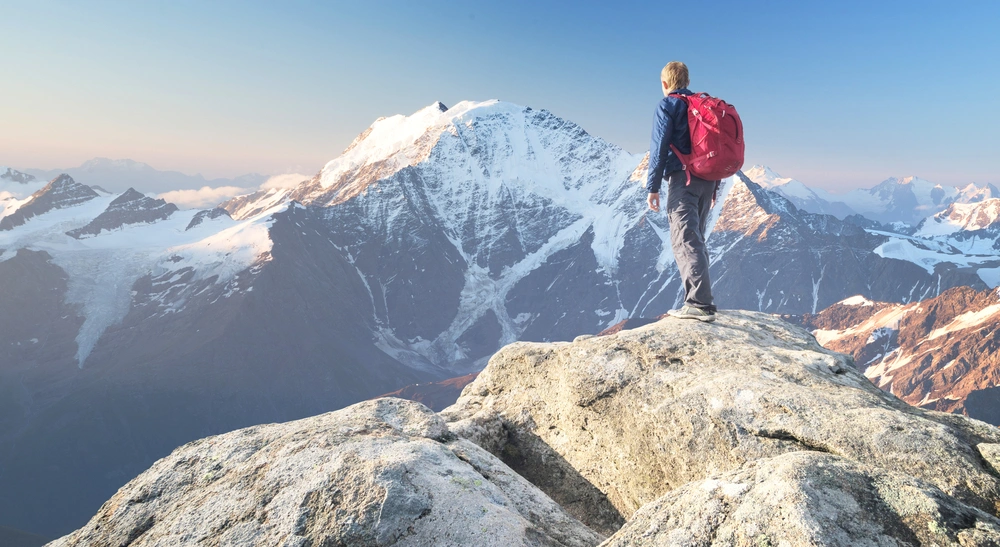
Altitude and Acclimatization
Goechala Pass is at its highest point about 16,200 feet (4,950 meters), therefore hikers need to be ready for problems that come with being at high altitudes, such as nausea, dizziness, or shortness of breath. To avoid altitude sickness, you need to acclimatize properly. Most trekkers spend a day at Tsokha or Dzongri to get used to the area before moving on.
| Day | Trek Route | Distance (in km) | Key Highlights |
| Day 1 | Arrival in Yuksom | – | Arrival and exploration of Yuksom |
| Day 2 | Yuksom to Tshoka | 9 | Trek through forests, overnight at Tshoka |
| Day 3 | Tshoka to Dzongri | 11 | Trek through alpine meadows, overnight at Dzongri |
| Day 4 | Dzongri to Dzongri Top and back | 4 | Early morning hike to Dzongri Top for panoramic views |
| Day 5 | Dzongri to Thansing | 7 | Gradual descent through meadows, overnight at Thansing |
| Day 6 | Thansing to Lamune | 7 | High-altitude meadow camp, acclimatization at Lamune |
| Day 7 | Lamune to Goechala and back | 14 | Ascent to Goechala Pass for breathtaking views, return to Thansing |
| Day 8 | Thansing to Tshoka | 13 | Descent back to Tshoka for an overnight stay |
| Day 9 | Tshoka to Yuksom | 9 | Return to Yuksom, trek ends |
Goechala Trek Itinerary
The following is the suggested itinerary for the Goechala Trek, which covers all the essential stops and ensures proper acclimatization.
Day 1: Arrival in Yuksom
The journey begins in Yuksom, a small town in West Sikkim. Most trekkers arrive here by road from New Jalpaiguri or Bagdogra. After arriving, trekkers can relax and explore the local area.
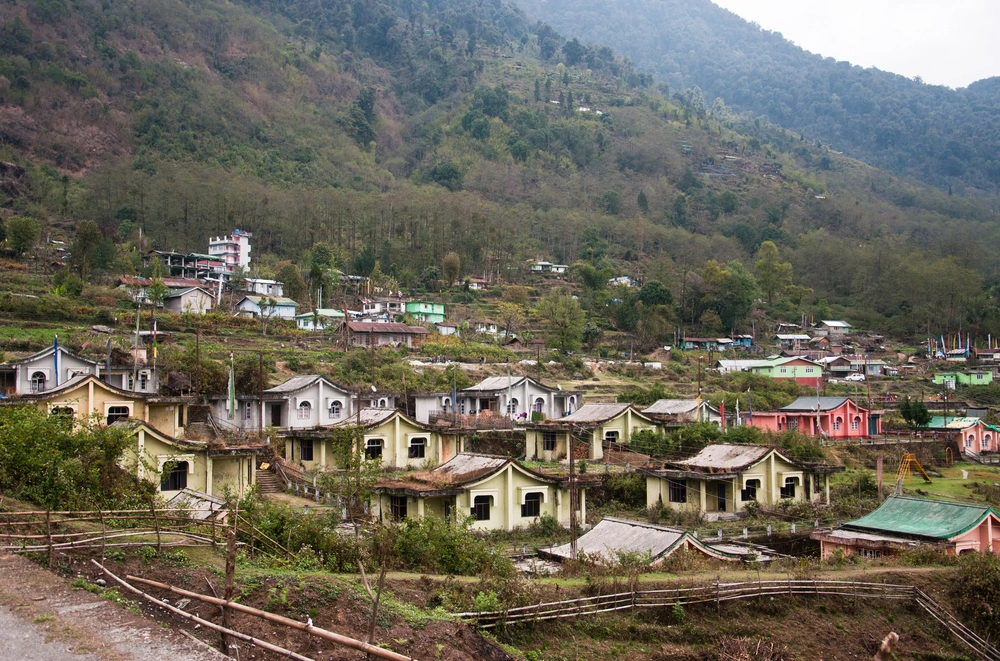
Day 2: Yuksom to Tshoka (9 km)
The journey starts by taking a beautiful tour through a thick forest of rhododendrons and oak, pine trees. It is a medium climbing day, and this day you will make an overnight stay at Tshoka. When you reach Tshoka, there is already the opportunity to start enjoying some stunning mountainous scenery.
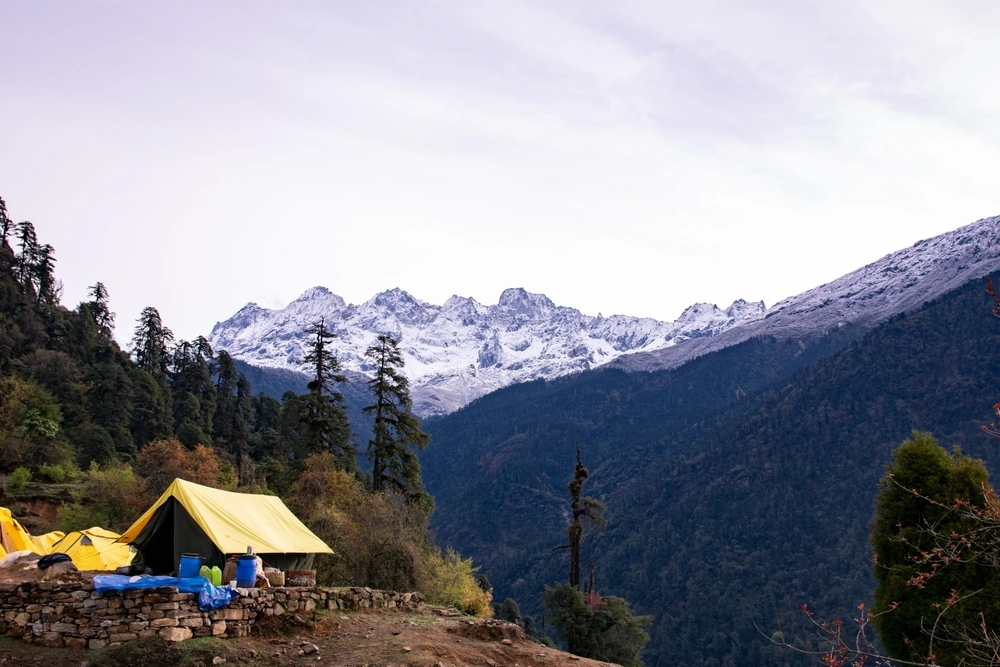
Day 3: Tshoka to Dzongri (11 km)
You will go hiking deep into forests and alpine grasslands today. Dzongri at the altitude of 13,100 feet (3,990 meters) remains the most frequently chosen camping site on the trek and the trekkers camp here at night. The region provides clear Kanchenjunga and other neighboring mountain sceneries.
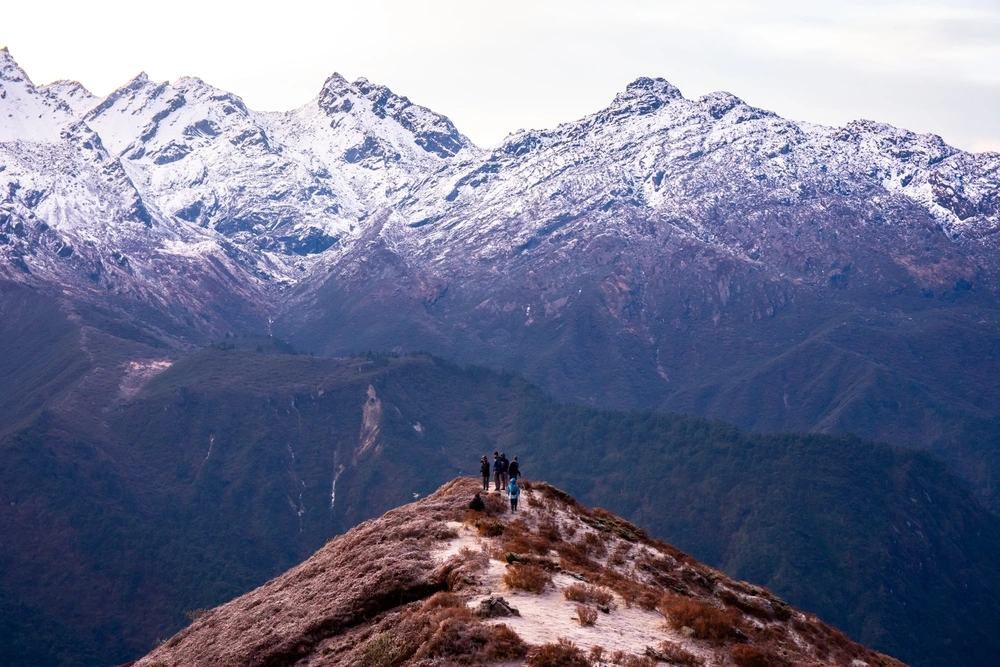
Day 4: Dzongri to Dzongri Top and back (4 km)
This day is also a highlight as one hikes to Dzongri Top in the very early mornings. Trekkers who are at the top are allowed a view of such peaks that cannot be experienced anywhere, Kanchenjunga and Mt. Pandim among other snow capped mountains. Then you get back to Dzongri and stay there overnight.
Day 5: Dzongri to Thansing (7 km)
This is a day of a slow descent to Thansing, a beautiful meadow with mountains in the background. The trail has got dramatic Himalaya views and Thansing is a good resting and acclimatization site.
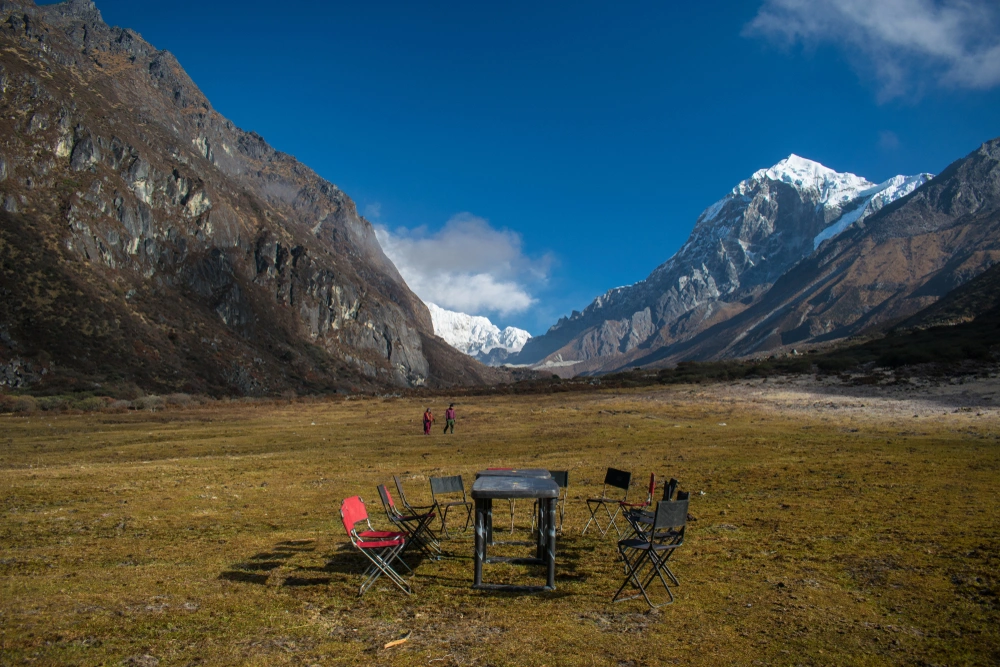
Day 6: Thansing to Lamune (7 km)
The journey proceeds in the altitude meadows of rocks and reaches Lamune which is at an altitude of 14,300 feet (4,365 meters). The region is characterized by the beauty of nature and mountain climbers relax here and prepare to make the last climb.
Day 7: Lamune to Goechala and back to Thansing (14 km)
This is not an easy day as someone must look forward to reaching 16,200 feet and that is at Goechala pass. The panoramic views of the Himalaya are indescribable and yet the most beautiful view of the Himalayas can be viewed when one is in this pass. When trekkers arrive at Goechala Pass, they spend some time there before going back to Thansing where an overnight stay is made.
Day 8: Thansing to Tshoka (13 km)
The final leg of the trek involves a long descent back to Tshoka, where you rest and celebrate your accomplishment.
Day 9: Tshoka to Yuksom (9 km)
The last stretch brings you back to Yuksom, where the trek ends.
Traveler Reviews: What You Need to Know
What Trekkers Love About Goechala
- Breathtaking Views: Apart from the physical strain of doing the trek, the breathtaking views of the Himalaya that can be seen best at Dzongri Top and Goechala Pass are said to have been one of the main highlights by the trekkers.
- Variety of Terrain: The trek is blessed with a wide range of terrain – wild forest to uplifting meadows as well as rugged rocky lands.
- Cultural Immersion: The journey also offers a chance to get acquainted with local Sikkimese people and their old fashioned lifestyle.
Challenges Faced by Trekkers
- Altitude Sickness: Since the trek changes altitude by climbing higher, altitude sickness might be a factor to consider in most trekkers and the recommendation is that one should acclimate properly.
- Difficult Terrain: Other trekkers considered some parts of the trail difficult as it has steep ascents and rocky nature.
- Weather Uncertainty: At the higher altitude, weather is changeable. Trekkers are advised to have cold wind and abrupt rain.
Survival Tips for the Goechala Trek
- Physical Preparation: Prior to the trek, engage in regular cardiovascular exercise and strength training to ensure stamina for the long days of trekking.
- Pack Light but Smart: Bring only the essentials. Lightweight gear such as a sleeping bag, trekking poles, and warm clothing are crucial.
- Hydrate and Eat Well: Keep hydrated throughout the trek and consume high-energy foods like nuts, dried fruits, and energy bars.
- Acclimatization is Key: Spend time acclimatizing at Dzongri and Lamune to prevent altitude sickness.
- Layer Up: The weather is constantly changing and that is why it is important to have layers of clothing. Wear clothes that are waterproof and windproof.
- Carry a First-Aid Kit: Essential for this trek, a primary medical kit, to which it includes medicines against altitude sickness.
Conclusion
The Goechala Trek is a unique experience and an ultimate challenge to people who want to explore the Himalaya to challenge and indulge in its beauty. It is a spectacular hike in the island that leaves an indelible mark of scenic landscapes, culture, and majestic mountain ranges. Train properly, read the advice and have fun on a trip that will take you through the core of Sikkim.
FAQs About the Goechala Trek
Q1: How difficult is the Goechala Trek?
The trek is not the easiest of treks but can be done by very good trekkers as it is a high altitude trek with rugged territory. Is the essential preparation of the body earlier established by proper physical training and acclimatization.
Q2: Can beginners do the Goechala Trek?
While it is possible for beginners to attempt the trek, it’s recommended that they have prior trekking experience or undertake preparation in lower-altitude treks.
Q3: What is the best season for the Goechala Trek?
The optimum period to undertake the trek will be in the pre-monsoon season (March to May) and the post monsoon season (September to November).
Q4: How do I reach Yuksom?
Yuksom can be reached by road from New Jalpaiguri, Siliguri, or Bagdogra. Regular taxis and shared cabs are available from these locations.


